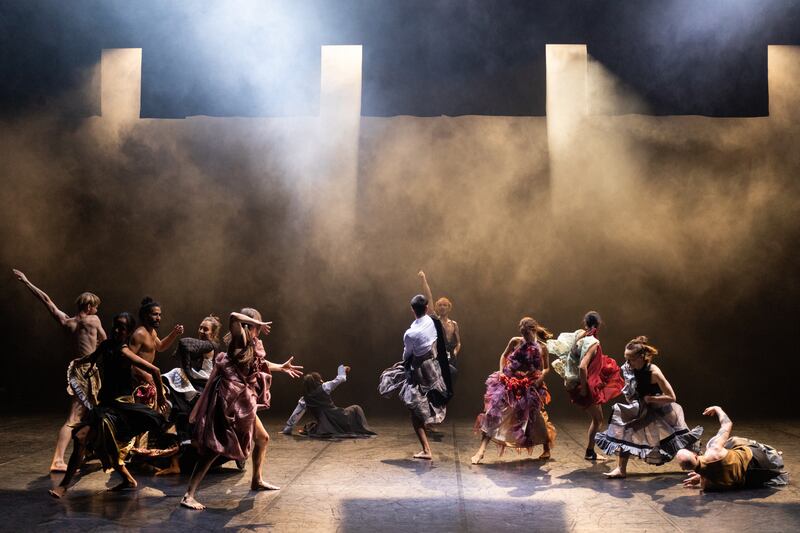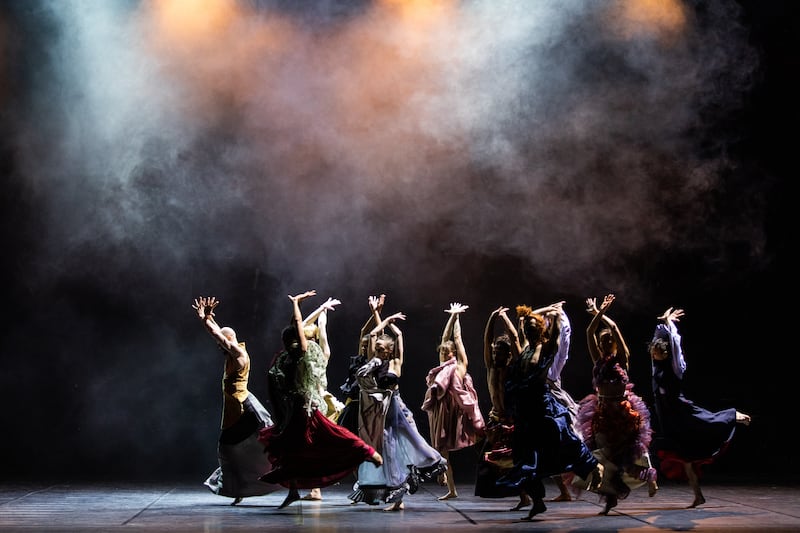Casting a superficial glance through Emanuel Gat Dance Company’s website shows Gat listed as choreographer for all the works. Closer inspection also sees him listed as a lighting designer and sometimes composer. Is this the sign of a talented multi-disciplined artist or a control freak, who needs to dictate every aspect of artistic output?
Listening to him by phone from Malta, it doesn’t take long to realise that Gat is the antithesis of a controlling artist. His beliefs and practices are intensely democratic and underpinned with a fundamental belief in the strength of collaboration, not just in the dance studio, but in everyday life.
Of course, almost all choreographers will publicly acknowledge their dancers as co-creators. But it can also be a programme note cliche anywhere on a spectrum between full-blown artistic communism and benign dictatorship.
Gat’s career began at a relatively late stage compared to other dance artists. After his military service in Israel, he began studying music, but was drawn to dance at age 23 after participating in a workshop with choreographer Nir Ben Gal. A few months later he joined Liat Dror Nir Ben Gal Company and two years later began working as an independent choreographer. Now based in Marseilles, he creates works for his eponymous company, as well as groups as diverse as Royal Swedish Ballet, Sydney Dance Company and Los Angeles Dance Project.
The Emanuel Gat Dance Company returns to this year’s Dublin Dance Festival with LOVETRAIN2020, a work that had a stuttering incubation during 2020.
I didn’t plan it that way, but it was nice that it really matched the feeling of release after lockdown
— Emanuel Gat
“We started creating it in January, but had to stop after a few weeks because of Covid,” he says. “The premiere was put back to June and then October, when we had an opportunity to perform between lockdowns. The theatre had just 30 per cent capacity, and after two days all the theatres closed again.”

LOVETRAIN2020 is a joyous exaltation of the physical, complete with flamboyant costumes, and might seem to be a Technicolor response to the greyness of lockdown. Except it’s not.
“I didn’t plan it that way, but it was nice that it really matched the feeling of release after lockdown. And I think it was also very much in contrast to most of the works that were made during Covid, which tended to be dark. This dance exploded like a burst of energy with super-positive vibes.” The over-the-top costumes are designed by Thomas Bradley, a dancer in Gat’s company.
“I asked him to create something that would be like people arriving at a red-carpet event, like a Met Gala or whatever. After that he basically just worked individually with each dancer and together they found a style. Actually, I didn’t see the costumes until they were completed, so I gave him a completely free hand and trusted his vision.”

Added to the visual exuberance is a soundtrack of songs by the English pop duo Tears For Fears, who had their heyday in the 1980s.
“Well, it is obviously music that I know very well for my teenage years, but I hadn’t really listened to it in years. I accidentally came across one of their songs, Seeds Of Love, when it popped up on my playlist while I was out walking. It was amazing how much I remembered, like the chords and the words, and so I then went back to rediscover the band’s other tracks. Apart from the six or so hits, there were a lot of songs that I wasn’t aware of and I found it fascinating how the music and words didn’t age at all.” Previously, Gat has used music by composers such as Stravinsky, Bach and Wagner, and his own compositions.
“My choice of music changes from project to project, but I have never used pop music before. The one thing that is fundamental is that I never use choreography to illustrate the music or make music to illustrate the choreography. I really want the two entities to stay very defined. I look for ways in which they can be in dialogue rather than make one a slave to the other.”
Behind Tears for Fears’ synth-pop are hard-hitting lyrics that reveal childhood trauma and societal pressure in songs like Suffer The Children and Woman In Chains. Over 40 years after their first album, these messages on mental and emotional health are still relevant.
I see dance companies as microcosms of society. You have individuals in a group, and they have to live and work together
— Emanuel Gat
“I don’t make direct reference to the lyrics in the songs, but the messages are there for the audience to hear, so it is like another layer for them.” It is a strategy that Gat has always incorporated in his work.
“I never want to make political references in my work. I’m not interested in making a dance about, for example, the conflict in the Middle East. For me that’s too small.”

His work isn’t political, but the way he works is. Building community is essential, not just in his own company, but also when working as a visiting choreographer. Utopia, the dance just created with ŻfinMalta, the national dance company of Malta, is a perfect example. It charts the personal journeys of 10 individuals looking for connection and examines the role of the performer as an onstage, live creator. Gat sees choreography as the practice of organising groups of people into optimal action. As such, it is a way of generating models that can be applicable to wider society.
“I see dance companies as microcosms of society. You have individuals in a group, and they have to live and work together. What is the best way to organise this little community so that the individual can make the maximum of their potential? They should be as happy and comfortable as possible, but also challenged.”
In the dance studio, balancing individuality expression with the needs of the overall group is the aim for all choreographers.
“In the studio there are responsibilities and resources to be organised. There is a choreographer and dancers, so is there going to be a vertical system of distribution or a horizontal system? How are decisions taken? Why should some be taken by the dancers and why should some be taken by the choreographer?
“You can translate that very easily to the way societies, financial systems and political systems are organised. It’s about how you treat the individual and how you organise the group. So in that sense, how we work is political because it is constantly proposing an alternative to the current systems.”
For me there is a visible difference between a dance that was created moment-to-moment in the studio and one that was thought about beforehand and then placed on the dancers
— Emanuel Gat
Gat doesn’t go into the dance studio with notebooks full of ideas. He feels it is better to meet the dancers and develop movements based on conversations and sharing ideas. He sees a difference between the creative act and thinking. Creativity happens in the moment and thought happens afterwards.
“Creating and thinking are two separate things but often get mixed up. Some artists will try to think their way into making art. For me there is a visible difference between a dance that was created moment-to-moment in the studio and one that was thought about beforehand and then placed on the dancers. Creativity goes through different channels than the thinking mind. For me, thinking comes after creativity.
“A simple example is looking at a genius footballer that can do things so creative and in the moment that it couldn’t possibly be pre-planned. The ability to see the opposition players, team-mates, knowing exactly the millisecond to kick the ball, the amount of force needed, and the angle it should be directed. This is creativity. Afterwards, you can look at the video of the game and you can analyse. What did the player actually do? How did he process the situation in real time? How did he make each decision? You can analyse it but when you’re actually doing it, you cannot think about it. You just do it and I think for me like being creative artistically is the same.”

It is rare to see such a sense of trust in fellow artists, whether costume designers or dancers, married with a sense of trust in the process of creativity. Most choreographers have the safety net of at least a few sketched-out ideas before meeting their dancers on the first day of rehearsal. In all of his creations, Emanuel Gat seems to have found the perfect balance between empowering the individual and creating community.
LOVETRAIN2020 runs at the Abbey Theatre, Dublin 1, on May 27th and 28th as part of Dublin Dance Festival
















